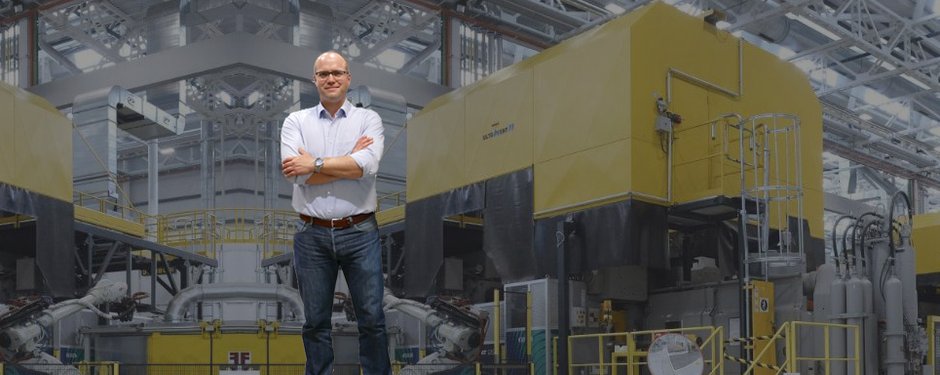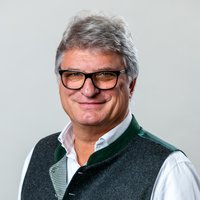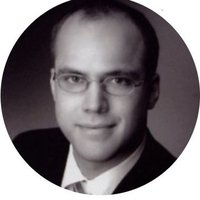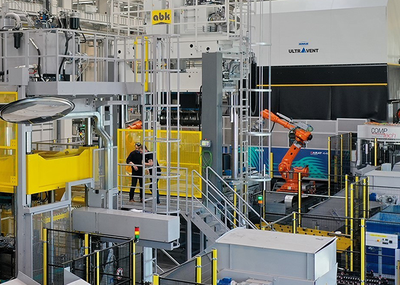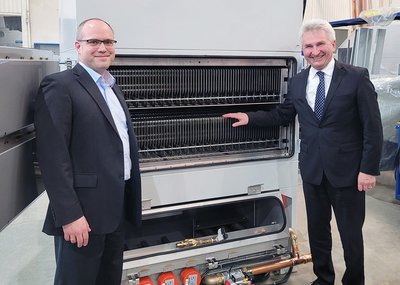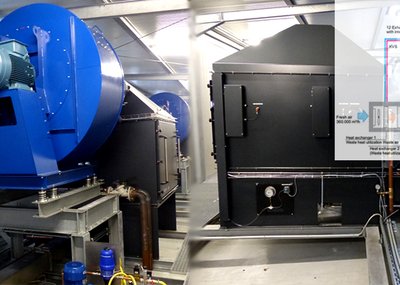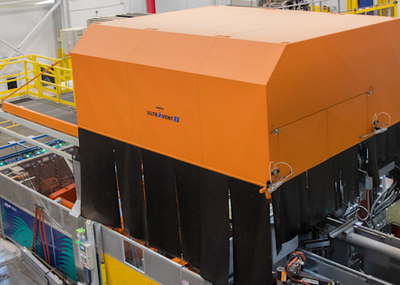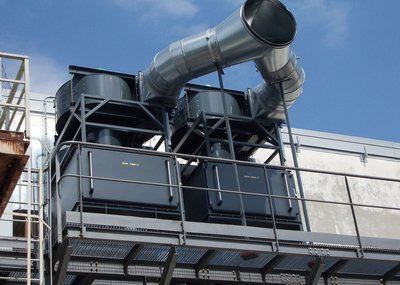Foundry-Planet: Dr. Wagner, KMA has just introduced the third generation of ULTRAVENT® filter systems for exhaust air purification in die casting foundries. What is the importance of the topics "clean environment" and "health at work" nowadays and what are the differences with regard to different markets?
Wagner: These topics have gained global importance for foundries in recent years. They already have a high status today and this will certainly continue to increase. There are various driving forces behind this development.
This is, firstly, state environmental protection. Around the globe, nations are committing to environmental protection and taking action in the form of regulations, regulatory instruments and incentive programs. Secondly, there is a growing awareness of environmental protection in societies. The issue of sustainability is driving innovation in the automotive industry in particular, both in terms of vehicles and drive systems and in terms of their manufacture. Climate neutrality has become an important factor in marketing. Thirdly, the foundry industry itself has evolved. Modern machinery and high demands on quality and reliability make it a critical competitive factor for foundries to attract and retain highly qualified employees. This requires a healthy and attractive working environment. Fourthly and finally, economic considerations lead to a changed perspective on environmental technology. With the right solutions in the management of exhaust air and fresh air as well as thermal energy, interesting cost advantages can be realized.
These aspects certainly have different weightings and stages of development in different parts of the world. Ultimately, however, they are global phenomena.
Foundry-Planet: What makes ULTRAVENT® III so attractive for modern die casting foundries in general?
Wagner: KMA Umwelttechnik was one of the first suppliers of special exhaust air filter solutions for die casting foundries 30 years ago. We have incorporated these many years of experience into a completely revised third generation of the ULTRAVENT®.
Basically, the ULTRAVENT® III is attractive because it separates the particles from the exhaust air using an electrostatic process. It is highly effective and at the same time enormously resource-saving. It can be operated permanently without having to replace and dispose of filter inserts as consumables.
With the ULTRAVENT® III, we have succeeded in further improving many performance features. For example, it is significantly more economical in operation. Power consumption has been reduced by up to 70%. It is also considerably quieter than its predecessor. The standard version has a higher range of functions, such as various programs for automatic cleaning and automatic control of the fan frequency. There are also innovations in the control system and the interfaces for integrated casting cells and remote maintenance. We are really proud of this total package.
Foundry-Planet: What are the main examples of further developments?
Wagner: From the outside, the further developments can be seen immediately in the changed appearance. The installations have been rearranged and the technology subsequently hidden behind and protected by panels. The redesigned maintenance doors on the front provide easier access to the interior of the filter unit and cleaning tank. The view from above reveals the new fan technology. Where several small fans were previously used, large impellers now ensure greater efficiency and smoother running.
Foundry-Planet: You point out that very high savings can be achieved in the energy budget in foundries. Your website and relevant technical articles talk about energy savings of up to 80%. How do you achieve these values?
Wagner: It is not only a question of treating the contaminated exhaust air from the foundry process, but also of how it is treated.
In die casting, emissions are often first allowed to disperse throughout the hall. Subsequently, the air in the large volume is replaced by fresh air. Moving large volumes of exhaust air and fresh air requires a lot of energy. For another, fresh outside air must be additionally heated at low outside temperatures. With our solutions, we can achieve remarkable savings: by directly capturing emissions at the casting cells, by locally cleaning the exhaust air within the hall, or by using central cleaning systems with integrated heat recovery to heat fresh air.
However, the differences in the operating costs of the filter systems on the market are also noteworthy. Mechanical filter systems with filters made of a fabric generate high air resistance. With the sticky substances in the exhaust air from the die casting process, they can also clog comparatively quickly. In contrast, the ULTRAVENT® has a very low pressure drop thanks to electrostatic separation. The air can flow freely between the differently charged plates of the electrostatic precipitator cells, the particles are electrically charged and, as with the magnet, are highly effectively diverted from the air stream and held. Even with increasing loading of the filter, the air resistance of the filter cells remains low. In terms of energy costs for fan operation alone, the ULTRAVENT® offers astonishing cost advantages. Since the fan frequency of the ULTRAVENT® III can also be adjusted as required and synchronized with the spray cycle of the casting cell as standard, the cost benefits are increased even further.
Many of our customers are initially unaware of their air management and energy costs. Accordingly, they are astonished when we jointly identify the potential cost benefits of our solutions.
Foundry-Planet: How compatible are the new ULTRAVENT® III filters when it comes to die casting cells from different manufacturers?
Wagner: We have been using the ULTRAVENT® very successfully for many years on all makes of die casting machines, especially in the cold chamber area. We make it our business to develop the best possible solution for the casting cell in each case. In the case of an extraction hood, for example, it is not just the die casting machine that is important, but the entire design of the casting cell: the positions and heights of the protective doors, the spray technology, the metering technology - after all, we want to optimally encapsulate the emissions with the extraction hood and feed them to the filter unit.
We are grateful for the close cooperation with die casting machine manufacturers as well as the exchange with leading suppliers of peripherals. It's great what you can get going together in the interest of customers.
Foundry-Planet: How can a new air and climate concept be reconciled with existing plants and how individually can your offers be tailored to customer requirements?
Wagner: We have always supported not only the equipment of new foundries or casting cells with environmental technology. Especially for existing plants and halls with installations that have grown over many years, our team can bring its great experience to bear. Be it with customized and automatically movable collection hoods, with air curtain systems or with central filters with heat recovery and stratified ventilation. A conversation is always worthwhile and the possible solutions are manifold.
Foundry-Planet: How do you see the future of die casting, and in particular the use of Giga presses with clamping forces of between 6,000 and 8,000 t, and where are the alternatives for die casting foundries if combustion engines become less common?
Wagner: The rapid growth of electric drive is currently leading to a realignment in die casting. For foundries, this results in risks when established business for them breaks away and they have to adapt to changed circumstances. But there are also opportunities to open up new products and position themselves with their specific capabilities. It is impressive to see the innovations that are being made to develop completely new areas of application for the automotive industry with light metals and the die casting process. The Giga presses for casting large, multifunctional castings or for producing an entire set of castings with just one shot, are an attention-grabbing example of this. From the pioneering work, a global trend towards large-scale plants has developed. However, the enormous dimensions result in quite unique challenges for the technology providers as well as for the foundries. We can expect the large plants to permanently expand the range of die casting machines. The variety of die casting products and the technologies used for them is increasing. With regard to environmental technology, we contribute with our solutions. Several casting cells beyond 5,000 t are already successfully operated with ULTRAVENT® filters.
Foundry-Plant: Thank you very much for the interview and all the best for your company.
Wagner: Thank you very much for your interest and your visit. Stay healthy.

